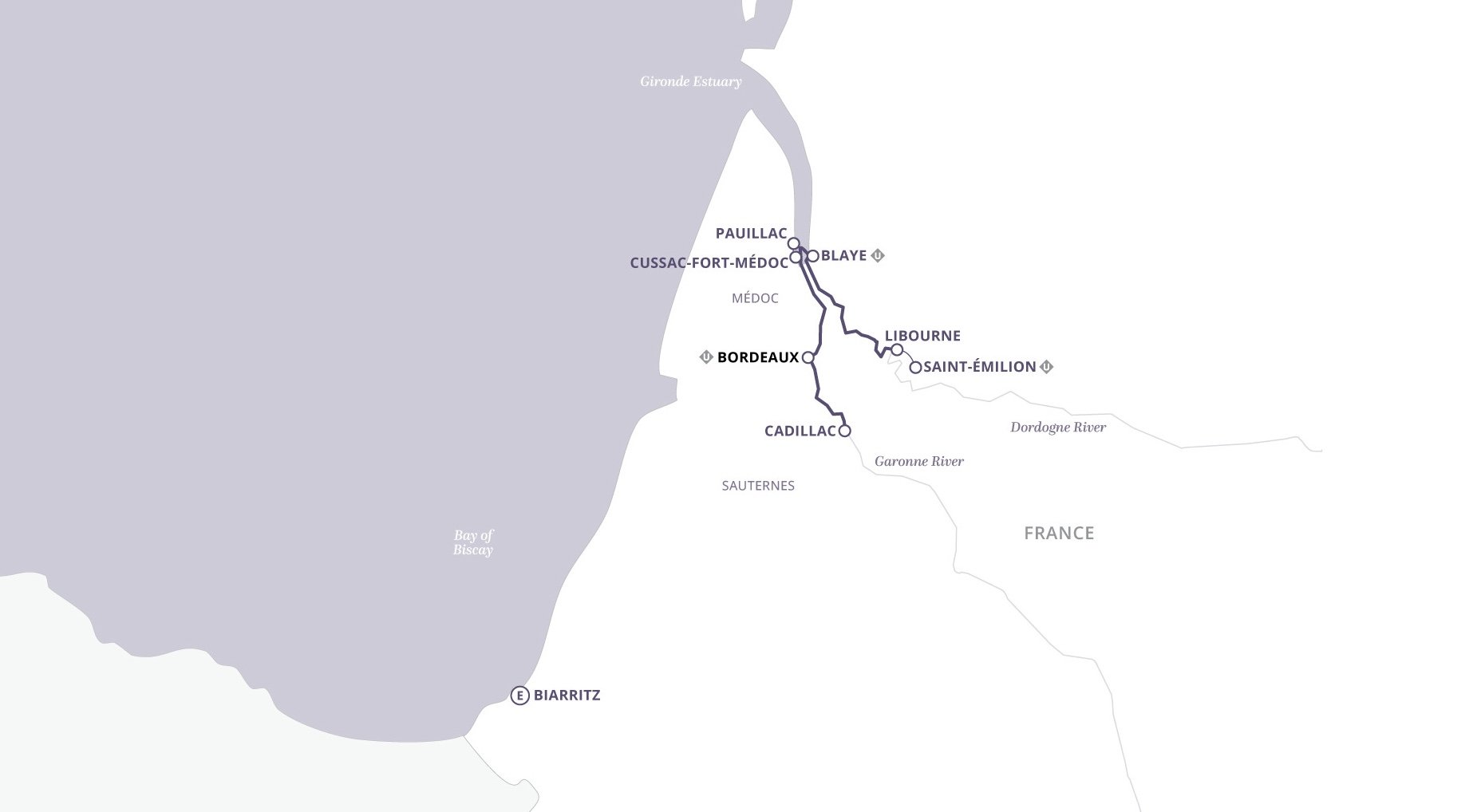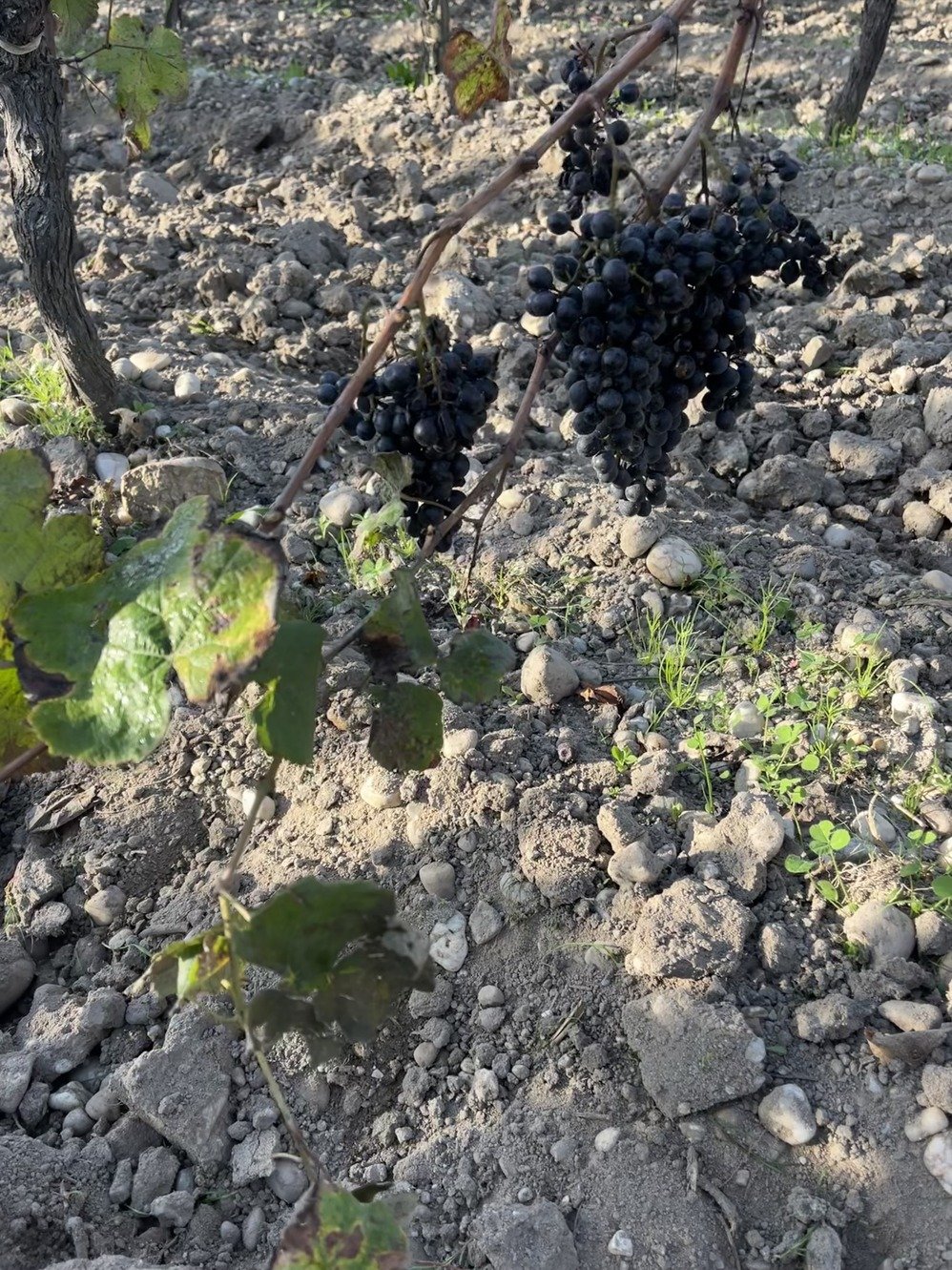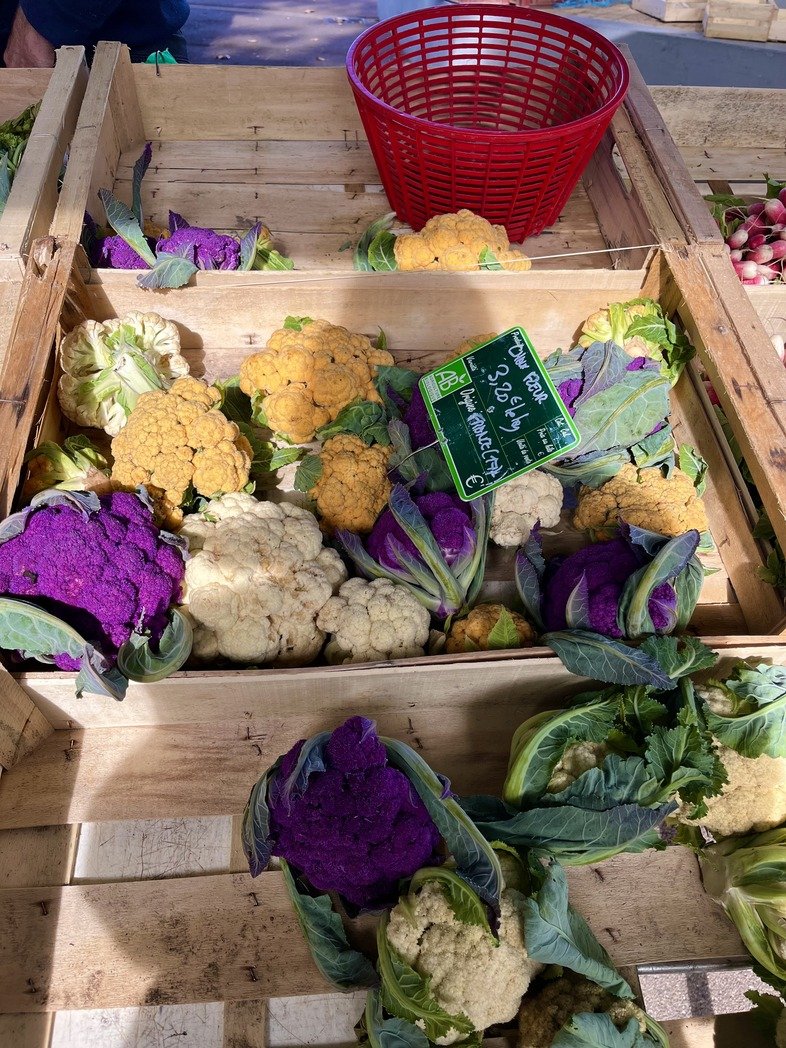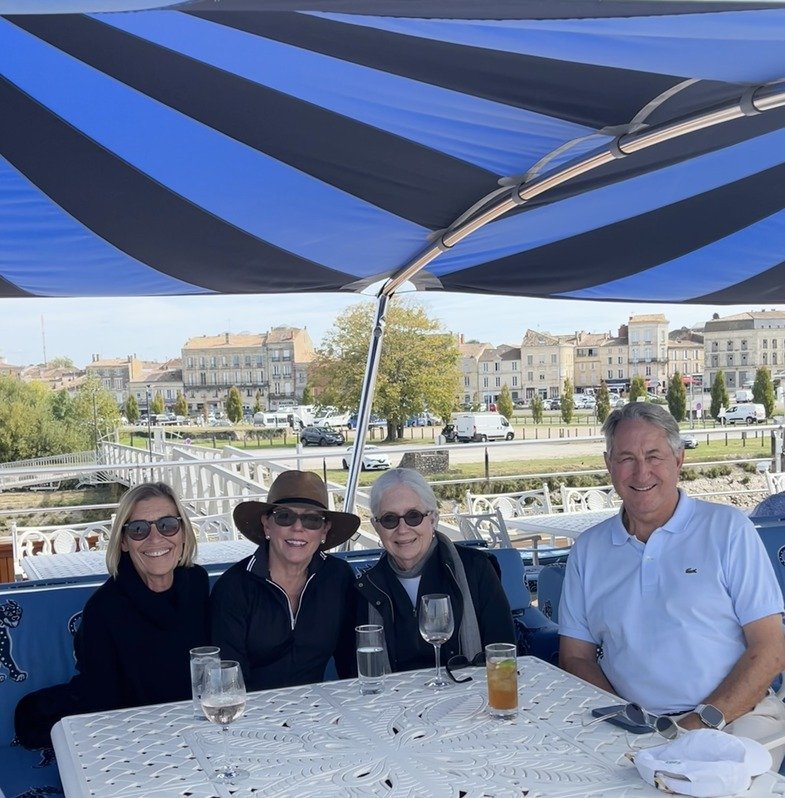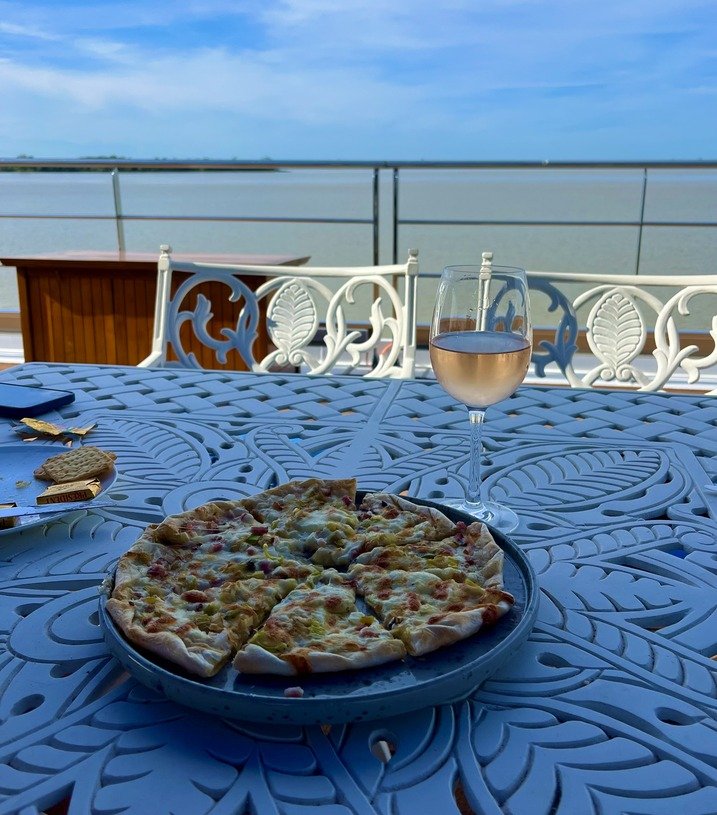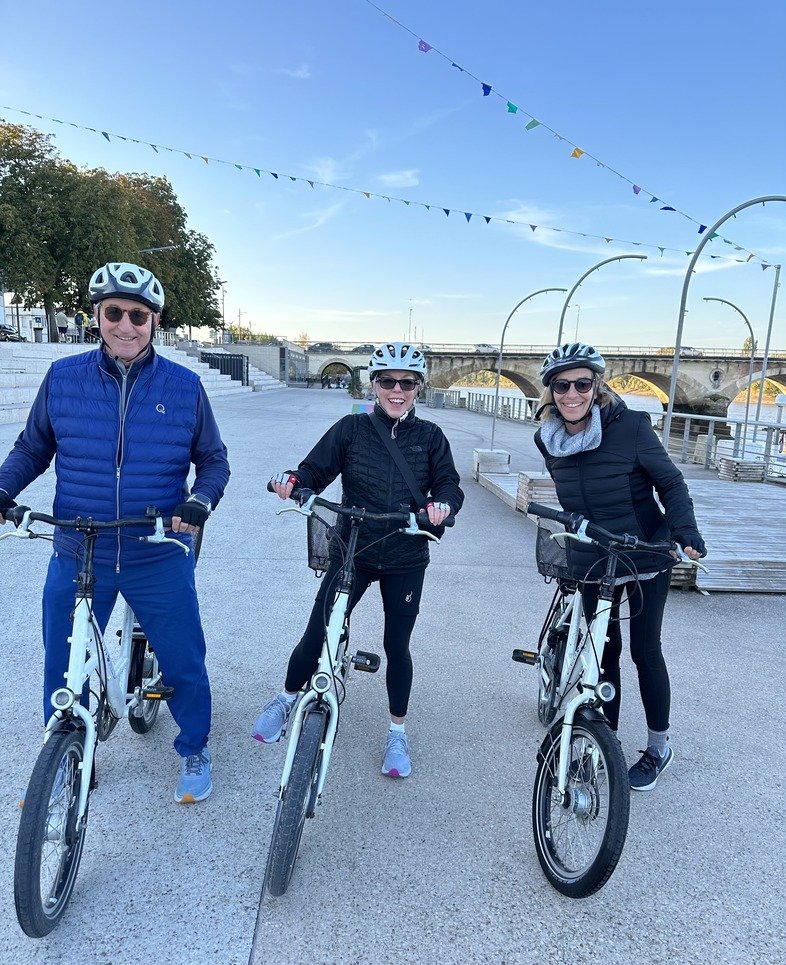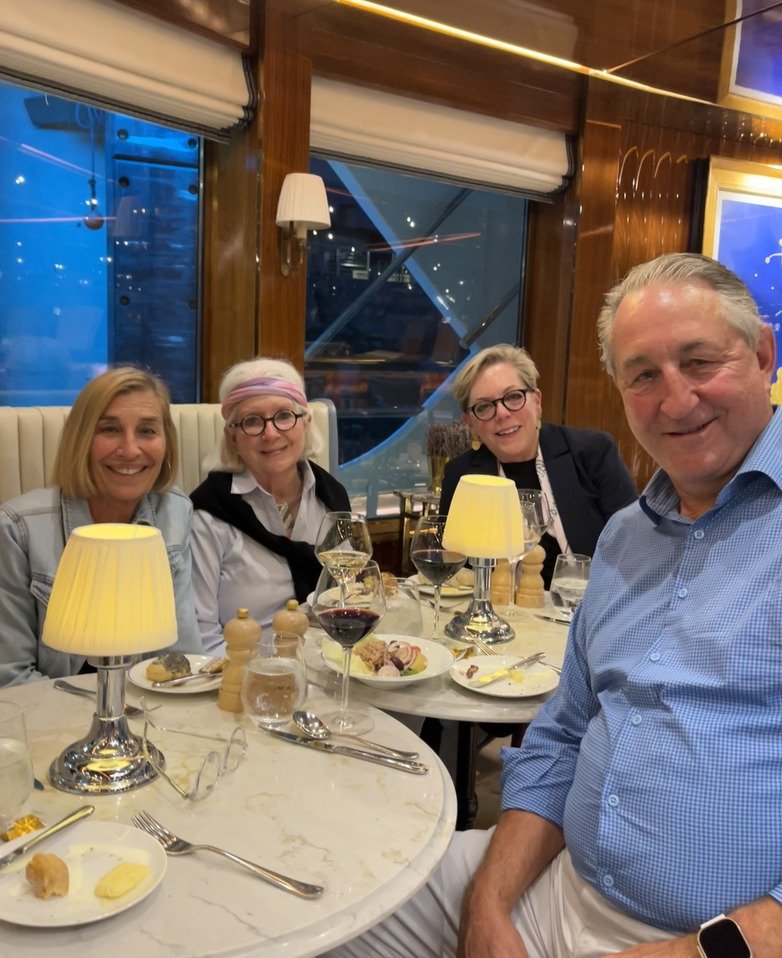PART 2: Bordeaux by Boat
The Backroads Brittany and Normandy trip with my daughter and eight of my best friends was hard to top. But I tried. Part 2 started October 1, 2023, the day Ray, Coco, and I left the cycling gang behind in Cabourg and took the train to Bordeaux, where we boarded the small, stylish S.S. Bon Voyage, part of the Uniworld Boutique River Cruise line. Our dear friend Catherine Diehl, whom I had asked to be my partner on this next part of the France adventure, was already on board.
The S.S. Bon Voyage stayed docked in Bordeaux through the rest of the day and night. After settling in and while Ray and Coco explored la Cité du Vin, a stunning modern museum dedicated to the culture of wine, Catherine and I spent all afternoon exploring the beautiful little city on foot and via the tram that ran along the waterfront and into the heart of the city. We meandered the mostly cobblestone streets and alleys and strolled along one of the longest pedestrian streets in Europe, Rue Sainte-Catherine, lined with boutiques and cafes. We stopped at several places to get a closer look: the mostly 13th and 14th-century Bordeaux Cathedral, a UNESCO World Heritage site with impressive Gothic architecture, as well as La Place de la Bourse and the Miroir d’Eau, the stunning 18th-century square with its wondrous reflective water mirror.
We spent the next seven days sailing three rivers in the Bordeaux region in Southwest France: the Garonne, the Dordogne, and the Gironde. Each day we docked at a small town or historic place and were offered several options for spending the day: small tours of vineyards and wineries, cycling trips into the French countryside and vineyards, walking trips into villages with traditional markets and historic buildings.
On Monday we awoke to beautiful weather and after a sumptuous French breakfast, we took a coach through the French countryside and vineyards to Cadillac, the summer home of Henri de Toulouse-Lautrec. The beautiful château is where the artist spent his summers with his mother, Adèle. The walls of the parlors and rooms were covered with his artwork: his distinctive and colorful views of Paris in the late 1800s and the iconic Moulin Rouge dancers, prostitutes, and famous singers that frequented the cafés and nightclubs of Paris. In the nearby town of Verdelais, we walked through a colonnade of beautiful oaks and 19th-century façades, close to the Verdelais’ basilica and cemetery where Henri de Toulouse-Lautrec is buried.
That evening, after a delicious dinner of local French fare, about twenty of us boarded a coach and were driven to the Bassins des Lumières, one of the largest digital art centers in the world, housed in a former submarine base. The immersive exhibitions project famous artworks and digital creations onto the vast walls, ceilings, and even the water surfaces of the base, creating a stunning experience of light and sound. We watched giant and eerie projections of Spanish designer and architect Antoni Gaudi’s creations and Spanish artist Salvador Dali’s surrealist artwork while listening to Pink Floyd being blasted through the cavernous spaces. It was an incredible visual and aural experience!
The next day, at Cussac Fort Médoc, we climbed on bikes (not eBikes this time but the old fashioned pedal yourself kind) and rode through several miles of grapevines and explored a prestigious wine châteaux, followed by local wine and esteemed Médoc oysters at the Guards’ House terrace at the old fort, built from 1689 to 1721 by Louis XIV to protect Bordeaux from enemy fleets.
We ended each day back on board the ship with a gathering in Le Salon Champagne, a long, cozy room with comfy couches and swivel armchairs in emerald tones, inspired by Yves Saint Laurent’s home, Villa Majorelle. We would drink a glass of champagne or a “proper gin and tonic” (in honor of David — it was one of his favorite cocktails, and he preferred it with Hendricks gin, Fever Tree tonic, and cucumber). The captain or the cruise director joined us, highlighting the next day’s port-of-call, history of the area, and the excursions that awaited us. Finally the chef entered and made our mouths water as he described the evening’s cuisine and wine offerings.
We cruised during dinner and into the evening, docking in Blaye. Once again after breakfast the next morning we hopped on bikes and cycled–this time the little scenic road between Blaye and Bourg-sur-Gironde which winds through charming hamlets with equally enchanting names like Pain de Sucre, Marmisson, and Roque de Thau. On one side, limestone cliffs rise dramatically, while on the other, the Gironde estuary stretches out, dotted with traditional fishing huts perched on stilts. Along the route are elegant 19th-century stone houses once owned by sea captains. They often traveled to very distant lands and brought back exotic plants that now adorn gardens and line the road. At one point we stopped outside a 17th century church and had and wine and cheese stop.
One of the most interesting things we saw on this bike ride was a long plastic tube attached to a pole in front of some rural homes. Our guide kept asking us to guess what they were, and we guessed mailboxes or birdhouses. None of us guessed correctly: plastic tubes that just fit fresh baguettes which are delivered daily by a local baker! Genius!
Upon returning to Blaye, our guide took us through the 17th-century crescent-shaped citadel built by the famous military engineer Vauban. This fortress contains the ruins of a medieval castle, houses, squares, streets, even a convent, all enclosed within stark walls. Standing on top of the walls offers a fabulous view of the estuary, giving the citadel a vast command of the river. The outdoor market in Blaye awoke all the senses with the local fish and vegetables, the freshly-baked bread, the perfume and candles, and the gorgeous fabrics and leathers.
Back aboard the ship, we lunched on the stunning Soleil Deck, with its long comfortable and shaded banquette seating, providing everyone with spectacular views of the river and French countryside. In warm, sunny weather, it’s a nice alternative to Le Grand Fromage, offering a wide array of delicious food from soup and salads to hot meats, vegetables, terrines, and casseroles.
In the warm, sunny afternoon we strolled the nearly-deserted streets of Bourg-sur-Gironde a sleepy little village with ancient ramparts, cannons, crumbling stone walls, and nearly-deserted cobbled streets. We couldn’t even find an open outdoor cafe to stop and enjoy the quiet beauty of this little place.
That evening during dinner the S.S. Bon Voyage sailed to Libourne, our base for two nights so we could immerse ourselves more deeply in the region’s history and wine culture. We spent most of the next day exploring the medieval town of Saint-Émilion, roaming its cobblestone lanes lined with wine shops and bakeries. For me, the town’s most remarkable feature was the 12th-century monolithic church carved directly into a cliff. Only its tower rises above ground; the rest of this extraordinary structure lies beneath the surface. Its expansive underground galleries once served as a sanctuary during chaotic times and include the grotto where St. Émilion, the town’s namesake, spent his final days in the ninth century. Seeing it in person is an awe-inspiring experience because of the sheer ingenuity of its construction.
Ray, Coco, Catherine and I discovered a cute outdoor cafe L’Énvers du Decor in a tree-shaded square and enjoyed a nice typical Bordeaux lunch of Salade Bordelaise (a light salad of fresh greens, walnuts, and a drizzle of walnut oil) and a Croque Monsieur, the beloved classic in a café lunch.
In the afternoon we met the cellar master of an estate that produces one of St. Emillion's finest wines, Château Siaurac. After a tour of the property, we watched the post-harvesting and wine-making process, toured their underground cellars and tasted the wine on a terrace overlooking the vineyards.
With the next day arrived another opportunity for a guided bicycle trip along the banks of the Dordogne River and several stops along the way to try to view the mascaret, also known as a tidal bore. This natural phenomenon occurs when the tidal wave from the ocean flows upriver, creating a powerful wave that travels against the river’s current.
Our guide explained that on the Dordogne River (and the neighboring Garonne and Gironde), the mascaret can appear during certain high tides, particularly around the spring and autumn equinoxes. It’s a unique and thrilling sight that attracts surfers and kayakers eager to ride the wave, as well as spectators who gather along the riverbanks to witness this extraordinary natural event. At the appointed time, we parked our bikes and walked out on a dock to wait for the possible mascaret–but in vain. No mascaret that day. What a sight that would have been! The link above has some amazing photos of this natural phenomenon and surfers and kayakers enjoying its waves.
Waking up back in Bordeaux, we opted to join a guided bike tour through the Quai des Chartrons, a historic riverfront neighborhood once home to British wine merchants during their dominance of the wine trade. After falling into decline in the 20th century, the area has been revitalized, with its grand merchant houses now hosting charming shops and cafés. We pedaled past antique shops of Rue Notre Dame and the Church of St.Louis and also explored iconic city squares such as Place de la Bourse and Place du Parlement. The ride concluded with a scenic return along the Garonne River, complete with a refreshing stop at one of the delightful cafés along the way. Our ship awaited us.
Our last lunch was up on the Soleil Deck, where we lingered over grilled chicken, wine, and desserts and just relaxed until dinner, a fabulous gourmet dinner followed by a gala where guests dressed in festival attire and enjoyed Moulin Rouge-themed music and dancing and regional wine and champagne. It seemed a fitting way to end the adventure.
Of course I missed David terribly during this week. But having my dear friends with me eased my heart ache. And I had David with me the whole time, scattering his ashes along the three Bordeaux rivers, in vineyards, around churches, in town squares, and in the planters of four beautiful olive trees that graced the deck of the S.S.Bon Voyage.




